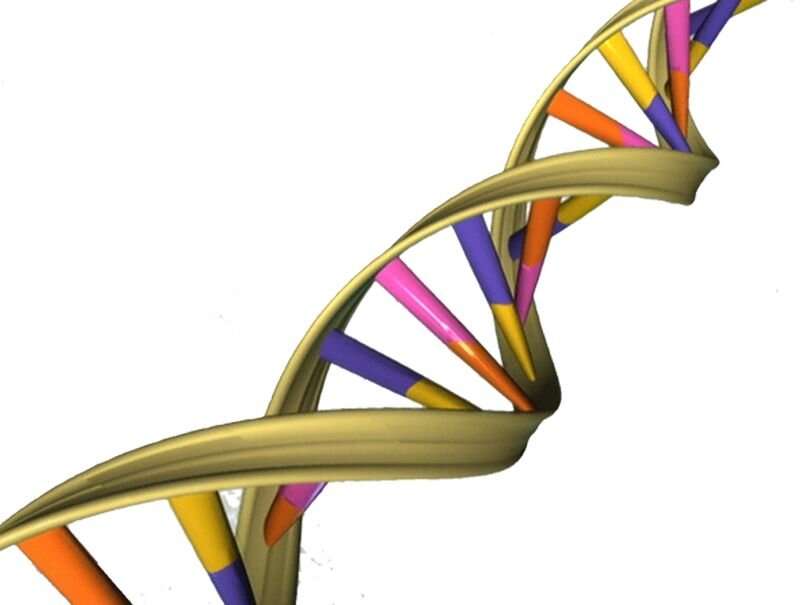Understanding how DNA repairs itself may lead to better cancer treatment

From cancer treatment to sunlight, radiation and toxins can severely damage DNA in both harmful and healthy cells. While the body has evolved to efficiently treat and restore damaged cells, the mechanisms that allow this natural repair remain misunderstood.
In a new study, Northwestern University researchers have used cryogenic electron microscopy (cryo-EM) to visualize this process by illuminating the mysterious cycle of DNA breakage sensing and repair. The researchers believe this new information could potentially form the basis for understanding how cells respond to chemotherapy and radiation and potentially even lead to improved cancer treatments.
Published Wednesday, April 14 in the journal Nature, the research offers new insight into how proteins work in concert to identify and resolve DNA double-strand breaks (DSB).
When a double strand break, or DSB—the most severe form of DNA damage—occurs, the repair pathway may insert or delete genes at the break site or potentially rearrange genes throughout the strand. In cases where chromosomal rearrangement occurs, catastrophic changes can lead to the development of cancer.
Using cryo-EM, researchers can obtain 3-D images of macromolecular structures at atomic resolution. According to Yuan He, an assistant of molecular bioscience in the Weinberg College of Arts and Sciences, cryo-EM's ability to image dynamic machinery "goes way beyond the capabilities" of other structural biology techniques.
Imaging DNA-protein complexes at various transitory phases allowed He's team to identify and create a model of a cell's repair pathway.
"There are many factors that work in concert to seal the nick," said He, the study's corresponding author. "We're taking the most straightforward way to solve the problem—by looking at proteins as they identify and repair a break."
The resulting model shows that, at times, two copies of DSB recognition complexes can hold together and bridge DSBs as the complexes signal for other factors to come to the breaking site. In another essential state, proteins align the two strands of DNA for a ligase to come and seal the nick. The lab then proposed a model of this pathway, showing how DNA bridges and aligns as it transfers between states.
[VIDEO] As the bottom component of the DNA-protein structure comes under stress, DNA strands are bridged to close proximity; once the component returns to a more relaxed state, the movement then joins the two DNA strands together.
"Seeing is believing" is a common saying in molecular biology, and one He thinks applies to his research directly. By observing the elegant process directly, an observer can easily make connections and understand how the complex system works together. But before this technology was available, He said it was akin to a blind person identifying an elephant by touch.
"Breakthroughs are usually thought of for something big and complex," said Siyu Chen, a postdoctoral student in He's lab and first author on the paper. "The question we're answering is fundamental and straightforward: DNA has been broken apart—so how do proteins join them together?"
The lab hopes findings have implications for how our cells come back from and respond to radiation and chemotherapy. Future research could bring more targeted therapies for this newly understood pathway.
The paper is titled "Structural basis of long-range to short-range synaptic transition in NHEJ."
More information: Siyu Chen et al, Structural basis of long-range to short-range synaptic transition in NHEJ, Nature (2021). DOI: 10.1038/s41586-021-03458-7
Journal information: Nature
Provided by Northwestern University




















